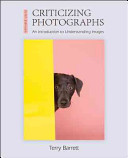This week I started to attend a new course: how to criticize photographs. It’s a 4 month class with just 1 lesson a month, but with a lot of practice (i.e. homework). The theory is based on Terry Barrett’s book Criticizing Photographs: An Introduction to Understanding Images.
Our (Dutch) course material distinguishes the following 4 phases on how to interpret a photograph:
- Description – just tell what you see as objectively as possible
- Analysis – name the image elements that significant for this photo
- Interpretation – what is the message of the photo; what is photographer trying to say
- Scoring – rank it
This was just the first lesson and it only covered the first 2 phases, but it already influences the way you look at images. In the newspaper, in magazines, on the web, everywhere. And actually this is one of the good things. In order to feel really comfortable with it, you have to practice, and practice, and practice. What’s even more important: it also affects the way you take pictures. So, ultimately, it will help you make better photo’s.
At the end of the lesson I had an interesting discussion with one of the fellow students. He stated that on the backside of each printed picture there should be a short summary of EXIF data, i.e. aperture, shutter speed, ISO, focal length, etc. I totally disagree with this (and said so). By analysing the image you should be able to determine all these things. If you see some blurred parts because of movement, you can tell a slow shutter speed was used. It doesn’t matter much if it was 1/8 or 1/15. The same applies to aperture. If you’re able to see the image has a very limited depth of field, you can say it was taken with a large aperture. Again, whether this was f/2.8 or f/1.4 doesn’t really matter. I’m always surprised when people ask for these kind of details, because you can tell (or at least you should be able to).
If I come across other interesting things or discussions in one of the future lessons, I’ll make you aware of it on this blog.
